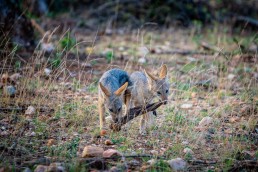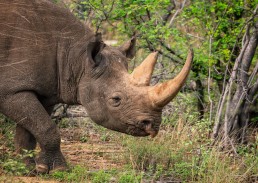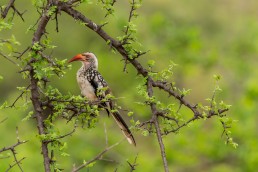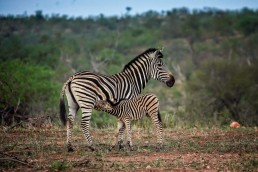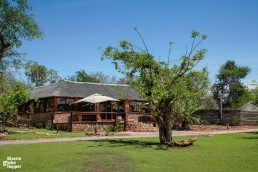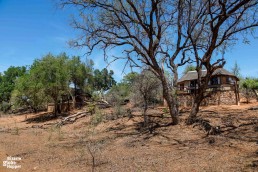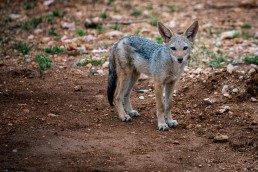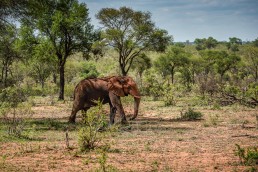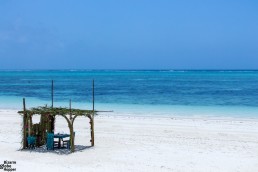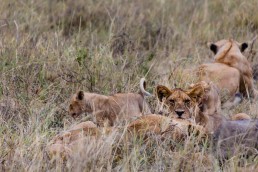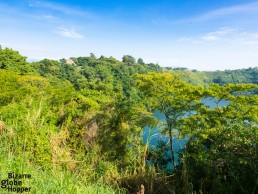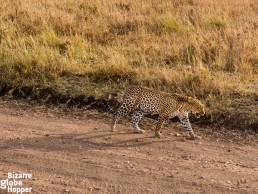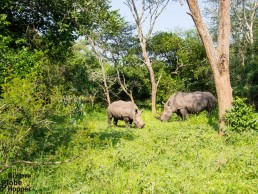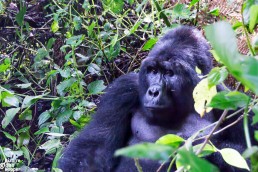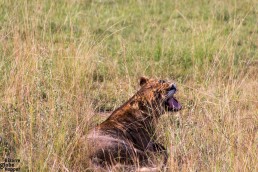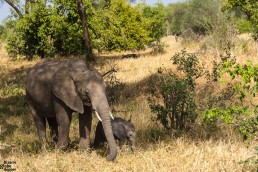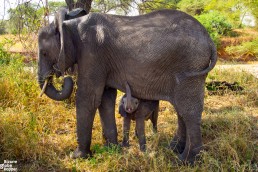Balule Nature Reserve is a Big Five safari destination within Greater Kruger National Park, yet pleasantly remote and off-the-beaten-path. There are no fences between Balule and Kruger: wildlife is the same, but in Balule the safari experience remains more sublime. As Balule is a relatively new private reserve, there a just a dozen of lodges.
Get the Taste of Balule’s Private Wildlife Sightings
In Balule Reserve, you’ll have more private wildlife encounters than in Kruger National Park and many of the other reserves with the Greater Kruger. Self-drives are not allowed in Balule, and as there are just a handful of lodges, vehicles are few. Unlike in Kruger, you don’t have to compete over animal sightings with other tourists – and your guide can drive off-road closer to the wildlife.
What Wildlife Can You See in Balule Nature Reserve?
Game drives unwrap the exceptional and varied biodiversity of Balule. While bouncing on gravel roads over steep little hills and passing majestic rocky outcrops, keep an eye out for jackal families hunting, elephant herds and giraffes peeking out of the bush, lions resting in the shadows and leopards lurking in the koppies.
In flat lowveld woodland, elephants are pushing down mopane trees and warthogs trotting away with offspring in tow. Balule also hosts some rare species, such as honey badgers.
Olifants River pierces Balule Nature Reserve, providing a steady crocodile and hippo population and attracting herds of elephants, giraffes, buffalos, and waterbucks for a drink – especially during the dry season (June–August). Thanks to the perennial Olifants River, Balule has impressive birding.
What wildlife did we see in Balule Nature Reserve? Black rhinos, herds of elephants and buffalos, several jackal families with tiny puppies, lions mating, freshly born impalas, kudus, zebras, giraffes, different species of vultures, and a myriad of other birds. We didn’t manage to see leopards this time, but it was just bad luck, as the rainy season had just started and all animals were slightly harder to see than usually. Still, that’s a pretty impressive list for five days of game drives!
All photos in this post by Piritta.
Balule Nature Reserve Vs. Other Private Reserves in Greater Kruger National Park
Sabi Sand, Klaserie, and Timbavati are far more famous private reserves within the Greater Kruger National Park than Balule. We hadn’t even heard about this off-the-beaten-path reserve, which promised already that there wouldn’t be as many tourists around. That’s the main reason why we chose a safari in Balule Reserve – and you should do the same.
As a rising safari destination, Balule Nature Reserve has more affordable safari packages than other private reserves within the Greater Kruger National Park. Compared to Sabi Sand and Timbavati, Balule has also better budget and mid-range accommodation options.
Don’t get us wrong: we still encourage you to visit Klaserie, Timbavati, and other areas in the Greater Kruger National Park. All private reserves are unique and offer amazing and private wildlife sightings if you choose your lodge wisely. We loved our visit Klaserie and will write a separate story about it, featuring stunning leopard and wild dog sightings (there we had the luck!).
Still, if you need to pick just one place to stay in the Greater Kruger National Park, I’d recommend safari in Balule Nature Reserve. I’ll discuss the big and beautiful “why” in details in the chapters below.
Highlights of Balule Nature Reserve
- Winning Value for Money: Affordable Safari Packages (When Compared to Sabi Sand, Klaserie and Timbavati Reserves)
- Off-the-Beaten-Path: Fewer Vehicles and Tourists, Better Wildlife Sightings
- Big Five Game Reserve: See Lions, Elephants, Buffalos, Rhinos, and Leopards
- Walking Safaris by Olifants River (Almost Guaranteed Animal Sightings)
- Amazing Birding Thanks to Olifants River
- Versatile Landscapes: More Diverse Backgrounds for Wildlife Photos Than in Kruger
- From Luxury Safaris to Affordable Middle-Range Safaris
- Kruger Day Safaris in Open Vehicles
10 REASONS TO CHOOSE BALULE NATURE RESERVE
1. Balule Nature Reserve is An Affordable Safari Destination
Compared to Klaserie and Timbavati, safaris in Balule Nature Reserve are more affordable. That means that you’ll get a better luxury or middle-range lodge for the same price – and there are some attractive budget-friendly options, as well (which are hard to find in Klaserie and Timbavati). The price-quality ratio in Balule Nature Reserve is simply better than in the more famous parts of Greater Kruger National Park.
2. See the Big Five in South Africa – Without Crowds
The Big Five – Lions, Elephants, Buffalos, Rhinos, and Leopards – is the bucket list for every safari-goer. As there are no fences between Balule and Kruger National Park, the Big Five roam freely in the area.
Many private reserves within the Greater Kruger National Park market themselves as the best place to see the Big Five in South Africa. In my opinion, choosing the best private reserve for you is a matter of taste. Take into consideration also other factors, which are discussed here. If you want to experience game drives without other vehicles around and appreciate private wildlife encounters, Balule Nature Reserve is hard to beat.
After countless of game drives, we don’t see ticking off animals as the ultimate safari goal, but it’s always exciting to observe big game in their natural habitat – and spot also new species outside the famed Big Five. In Balule, lack of other tourists makes game drives feel like a personal discovery.
3. Versatile Landscapes and Eco-system of Balule Nature Reserve
On game drives in Balule Nature Reserve, the landscapes keep changing quickly unlike elsewhere in the Greater Kruger National Park. The conserved area called Balule Reserve spans over 7.000.000 acres of woodland lowveld, which flora and fauna are among the most complex within Greater Kruger National Park.
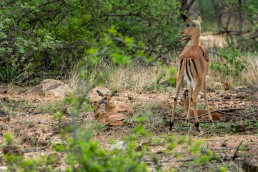
4. Walking Safaris by Olifants River: Always Something to See!
Walking safaris in Balule Reserve usually pop by Olifants River, which invites animals to drink and makes wildlife spotting a lot easier. As a perennial river, Olifants offer relatively easy hippo and crocodile sightings, which makes walking safaris more rewarding.
We’ve been on many walking safaris and learned to accept the fact that you might not see any big game even after 3 hours walk in the bush. If there’s a river teeming with hippos and crocs nearby, you are almost guaranteed to see these animals relatively close by. In Balule Reserve, we were also lucky to observe elephants at a short distance.
5. Birding by Balule’s Olifants River
Olifants River offers impressive birding with 250 recorded species. Thus, Balule Nature Reserve is one of the best places in South Africa for birding and bird photography.
Raptors and weavers are easily spotted at the riverfront. One of our favorite birds, the stunning lilac breasted roller, arrived last year in the Greater Kruger at the same time with us.
6. Off the Beaten Path Safaris in Grietjie Nature Reserve (Within Balule Game Reserve)
World-famous Kruger National Park is more crowded than you could imagine, which was disappointing for us. In the remote corners of Greater Kruger National Park, it’s still possible to do game drives without seeing any other vehicles.
Grietjie Nature Reserve at the northern tip of Balule is just that unspoiled wilderness area that every safari-goer is dreaming about. Game drives unwrap the exceptional and varied biodiversity. While bouncing on gravel roads over steep little hills and by majestic rocky outcrops, keep an eye out for the elephants pushing down mopane trees, warthogs trotting away with offspring in tow, and big cats hiding in the shadows.
Grietjie Nature Reserve hosts some rare species, such as honey badgers, and has impressive birding with 280 recorded species. On our first game drive in Grietjie Reserve, we didn’t see any other vehicles.
To be able to experience Grietje Reserve, choose a lodge that has permission to do game drives there (such as Baluleni Safari Lodge).
7. Rising Eco-Tourism Safari Destination in Greater Kruger National Park
Many of the private reserves surrounding Kruger National Park are marketed as eco-tourism destinations. With eco-friendly lodges and sustainable practices, Balule is a lesser-known rising star.
Choose a nature-friendly safari lodge in Balule, which supports local conservation efforts and acts conservation-mindedly towards visiting wildlife. Check out chapter nine for our detailed recommendation.
8. The Winning Combination: Balule Game Reserve With Day Safaris in Kruger National Park
If you have only 3-5 days for a South African safari, combine Balule Game Reserve with a full-day safari in Kruger National Park. Thus, you get the taste of game drives in one of the largest – and most famous – game reserves in Africa.
It’s astonishing how much animals you can see within just one day in Kruger National Park. But it’s equally mind-boggling how many other vehicles and tourists you will see. We have visited many of the best national parks in Africa, such as Serengeti and Masai Mara, and weren’t still prepared to how commercial Kruger National Park is nowadays. For many safari tourists, it’s enough to visit Kruger National Park on a full-day tour, after which they can spend the rest of their safari in more pristine private reserves within the Greater Kruger area.
There are currently only two safari companies within Balule Reserve, which have a license to organize Kruger day safaris in open vehicles – and Baluleni Safari Lodge one of them. We tried them both, and state whole-heartedly that the guides, safari vehicles, and the level of service of Baluleni are unrivaled.
9. Baluleni Safari Lodge: Hidden Gem in Balule Nature Reserve
For us, picking the right safari lodges in Balule Nature Reserve made all the difference. If you’re searching for affordable and authentic South African safari experience, you cannot go wrong with Baluleni Safari Lodge.
Baluleni combines old-world South African hospitality with the ultimate attention to details, pushing the boundaries of a conventional safari lodge. The value of their safari packages is outstanding – and the level of service unheard-of in this price range.
Remote Boutique Lodge in the Wilderness of Balule Reserve
Firstly, the location of Baluleni is ideal for those seeking tranquil safari experience away from the crowds. Baluleni lies by the bank of Olifants River, at the end of long and winding little gravel road that climbs over bushy hills and descends to the valley with a dry river bed. We used to see many animals just by their private road.
When we arrived, a fresh impala kill awaited at the center of their well-manicured garden, posing intriguing questions of what had happened there in the night before. You will stay in the middle of the wilderness, in the Big Five area. There are no fences around the property – and that makes every moment exciting. You can see anything from your tent, chalet, or lunch table.
Baluleni Safari Lodge has only five chalets and two safari tents overlooking the riverine landscape. This creates a sense of seclusion and intimacy.
Heartfelt Safari Experience
In Baluleni Safari Lodge, you are treated as both a VIP guest and a family member. That’s a rare skill, which only a few safari lodges that we’ve visited have mastered (and usually, the successful ones have charged ten times more than Baluleni).
The atmosphere is casual, dinners are among the best we’ve had in South Africa, and service is always heartfelt. The owners, Elke and Evert, connect with each guest and share their stories over dinners like old friends. The safari experience is effortless and delightful at each moment.
Your days just flow in Baluleni, from morning game drives with bush coffee breaks to multi-course breakfasts, chilling at the pool with visiting elephants, spontaneous river walks to spot hippos with the owners, to casual lunches at the restaurant and evening game drives in the bush. I’ll address the most magical part, boma dinners, and stargazing, in a separate chapter below.
Everything is smooth and easy for the guests thanks to the invisible but extremely efficient mode of operation. Even the reservation process is smooth: no other lodge has ever provided me with as quick, helpful, and in-depth email answers as Baluleni.
Good Wildlife Conservation Policies
Still, we appreciate most of Baluleni’s true conservation-mindedness. When elephants raid their beautiful garden, they watch lovingly the precious creatures and tell guests how they are taking care of the ecosystem – not destroying their garden but helping the bush and other creatures. Like Evert puts it, elephants have been designed to keep bush open and help it to fight against erosion.
The owners take an open stand against wildlife interactions, which are unfortunately widely available in the Greater Kruger and Hoedspruit area. Elke and Evert are among the most good-hearted and animal-loving persons we’ve ever met. We even saw how they talked over guests who were interested in doing elephant interaction at the end of their safari.
What animals can you see in Baluleni Safari Lodge?
Baluleni’s resident elephants are getting famous thanks to continuous Facebook updates. We were lucky to witness a rare event of warthog eating an impala at the yard while having our first lunch. We saw baboons, warthogs, and impalas crossing the yard on every day of our stay.
The chalets are at the bank of Olifants River, meaning that you might share the pathways with hippos. They’ve had big cats on the property, as well. We listened to the lion roars while savoring multicourse dinner at the outdoor boma.
Balule Nature Reserve is the Big Five area, and Baluleni Safari Lodge doesn’t have fences. So, you can encounter any wild animal at the lodge but fear no more. After dark, guides escort you to the chalets and tents.
Rare Treat: Honey Badger Eating a Scorpion at Baluleni Safari Lodge
Yes, it’s disturbing and among the “to die for” wildlife encounters which have happened at the property of Baluleni Safari Lodge. We still cannot believe that the death-defying honey badger can eat venomous snakes and scorpions! It gets even weirder with these badass creatures, as they use the venom to boost their immune system: think of it as a venom vaccine. Check out the video below (courtesy of Elke Van Eeden/Baluleni Safari Lodge) for the rarely seen, incredible encounter!
10. Boma Dinners and Stargazing in Balule Nature Reserve
South Africa and Namibia offer the best stargazing spots in Africa. The distant corners of Balule Nature Reserve are far away from the light pollution of modern civilization. Even the nearby towns are small and as the lodges are few, the night skies lit up with bright constellations. We’ve experienced better stargazing only in Namibia.
The most memorable boma dinners of our Greater Kruger safari tour were in Baluleni Safari Lodge. Nothing beats listening nearby lion roars under a blanket of stars, around the dancing flames. In Baluleni, the campfires are even more magical than usual, as Evert’s secret recipe keeps fiery blue flames flickering through the night. Elephants are frequent guests in Baluleni’s boma dinners, peeking their trunks across the wooden enclosure (called boma in Swahili), which is designed to protect the camp.
Tips for Picking a Lodge in Balule Nature Reserve
- Consider whether you want to combine Kruger National Park into your Balule safari: only two companies in Balule Reserve can do Kruger day safaris in open vehicles
- Check that the lodge is eco-friendly and supports local conservation efforts
- Check where the game drives are done: each lodge in private reserve operates in different areas where they have permission to drive
- Check the reviews on TripAdvisor, SafariBookings, and other services
- Consider whether you’re looking for a luxury safari or affordable safari, chalet or tent, remote or central location, etc.
Best Times to Visit Balule Nature Reserve (For Safaris & Wildlife Watching)
Balule Nature Reserve can be visited year-round. Each season has its pros and cons. Generally, wildlife watching is excellent throughout the year in the Greater Kruger National Park.
Dry season (from May to September) is officially the best timing for wildlife watching in Balule Reserve and the Greater Kruger National Park as a whole. It’s winter time in South Africa, which translates into pleasant weather in otherwise hot Kruger area with virtually no rain. Visibility is better than in summer months due to thinner vegetation. Bring a jacket for early morning game drives.
Summer months (October to April) mark the wet season in Balule and the Greater Kruger National Park. The rain patterns have varied during the last years (it’s been the worst drought in the history of Kruger National Park), so the division isn’t that clear anymore. Summertime brings lush vegetation and baby animals.
We loved our visit to Balule Reserve last December, at the beginning of the rainy season. We witnessed the first rains: how bush candles burst in white and purple flowers, stunning migratory birds returned, impalas gave birth, and tons of baby animals posed for our cameras. We felt privileged to see how quickly the first rains transformed the barren scenery into a fragrant flower garden.
Balule Nature Reserve Facts & Figures
- The word “balule” means buffalo in Shangaan
- Balule Nature Reserve’s conservation area is appr. 7.000.000 acres (23.000 km2)
- The borders between Balule Nature Reserve and Kruger National Park
- Balule is just one-hour drive from the two main gates of Kruger National Park
- Balule is lowveld area and mixed woodland eco-zone
- Balule Reserve is also the birth place of the Black Mamba Anti-Poaching Unit that we admire. The Black Mambas are female rangers who protect the Olifants West Nature Reserve from poachers.
How to Get to Balule Nature Reserve
Getting to the Balule Nature Reserve is easy. Most tourists take a shuttle or internal flight to Hoedspruit. Balule Reserve lodges can pick you up from the airport or shuttle drop off locations. Depending on your lodge, some shuttle companies even offer door-to-door rides.
Johannesburg to Balule Nature Reserve (Through Hoedspruit)
Daily shuttles from Johannesburg to Hoedspruit take around 6 hours and cost around R500-1000. There are morning and afternoon shuttles available.
Flying is the most convenient and scenic way to travel from Johannesburg to Hoedspruit. The flight takes around one hour.
A rental car allows you to take the Panorama Route on your way from Johannesburg to Hoedspruit (highly recommendable if you have time). Also some safari companies offer transfers through Panorama Route and Blyde River Canyon, which makes the long journey more rewarding.
Driving from Johannesburg to Hoedspruit (450km) takes around 5 hours without breaks. Add 0,5–1 hour more for reaching your lodge in Balule Nature Reserve, depending on the location.
Durban to Balule Nature Reserve (Through Hoedspruit)
Durban is 10 hours drive from Hoedspruit. Unless you have your own car and can split the journey in half, I’d recommend flying between Durban and Hoedspruit. You can also fly to Johannesburg and take a shuttle to Hoedspruit.
Cape Town to Balule Nature Reserve (Through Hoedspruit)
Fly from Cape Town to Hoedspruit and negotiate a pick-up service from your Balule Nature Reserve lodge.
Have you been on a safari or in the Greater Kruger National Park? Would you pick Balule Reserve for your next safari destination? Please share your thoughts in the comments below. Our visit in Balule Nature Reserve was hosted by Baluleni Safari Lodge but, as always, all opinions remain our own.
Help us to spread the word – Pin this story!
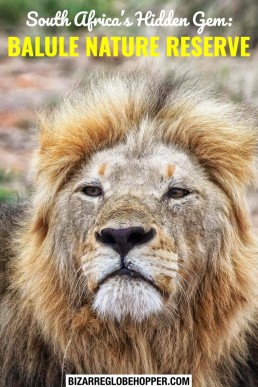
You May Also Like to Read:
3-Day Kruger National Park Safari
Is a 3-day Kruger safari enough? You can spend endless time on a safari in Kruger National Park, but even three days may be enough.
10 Romantic Destinations in East Africa
Arouse your wanderlust with our list of 10 romantic destinations in East Africa!
Visit Serengeti in March for Baby Animals and Predators in Action
Serengeti is one of the best places on earth to witness the ancient drama of prey and predator. In March, the migrating wildebeests make the big cats reckless.
Soothing Visit to the Crater Lakes of Uganda
The photogenic explosion craters rhythm the rolling hills near Fort Portal, Uganda. Some craters are flooded with unbelievably clear water; the others are vegetated and even cultivated. Our brief visit to the crater lake area was an utter bliss in between a tight safari schedule
How to Find the Best Wildlife Sightings in Serengeti National Park
Serengeti encapsulates the African safari experience. More than a million wildebeest roam through the endless plains each year following the magical beat of nature while the whole Big Five runs close. Get the box seat from this ultimate wildlife theater instead of fighting for the best sightings with the masses!
Tracking Rhinos on Foot in Uganda
Would you dare to track down rhinos on foot? We followed a ranger to the thick Ugandan bush to see our first white rhinos from zero distance.
Meeting the Giants of the Forest – Gorilla Trekking in Bwindi Impenetrable Forest, Uganda
How is it like to meet the endangered mountain gorillas of Bwindi Impenetrable Forest in Uganda? How to book and what to bring? Read on!
Chasing Lions at Queen Elizabeth National Park in Uganda
Track tree-climbing lions, take a boat safari in Kazinga Channel or visit bat cave in the beautiful Queen Elizabeth National Park in Uganda.
Tarangire National Park – the Best Place to See the African Elephants?
Tarangire National Park in Tanzania is often said to be the best place to see the African elephants and it certainly lives up to its reputation.
How to Plan the Best Safari in Tanzania
How to plan the best safari itinerary in Tanzania? What are the pros and cons of the high and low season? Check our safari planning tips before you go!


